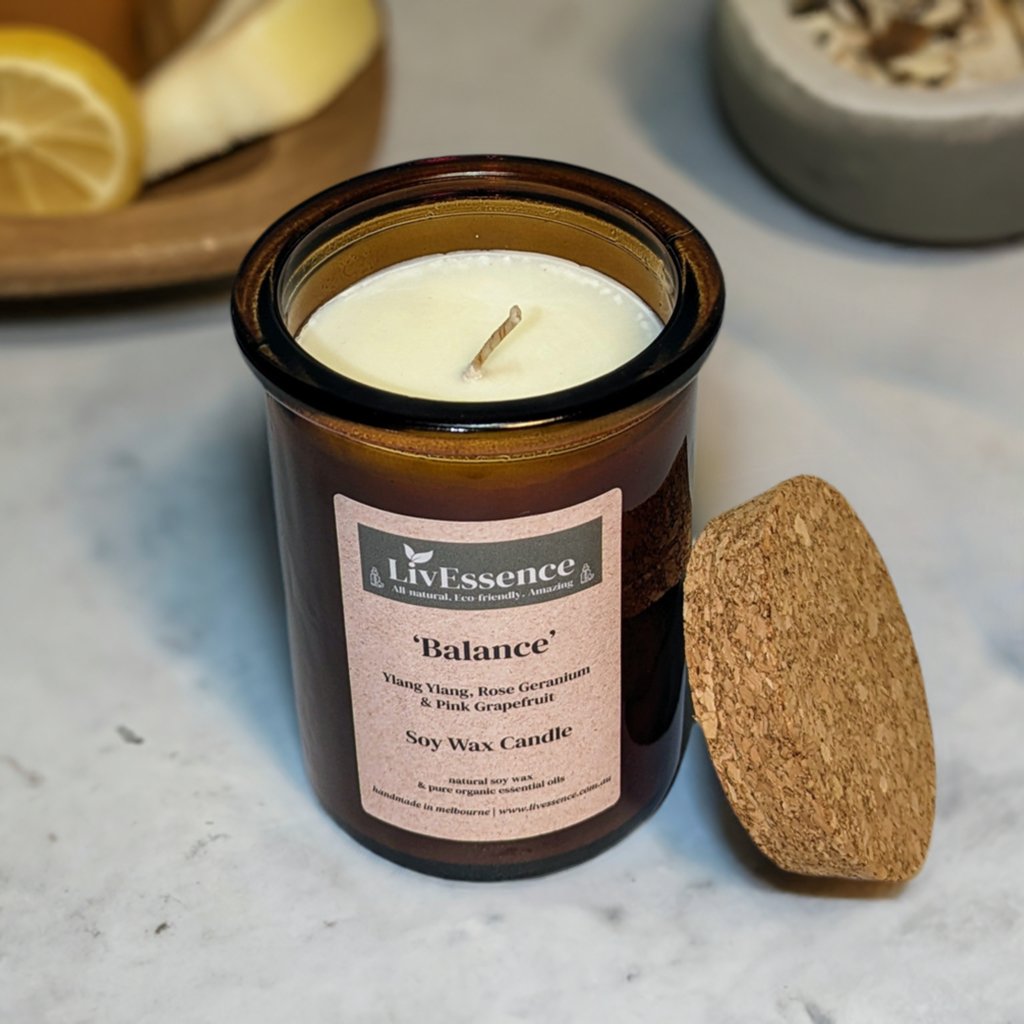From Wick to Wax: Comprehending the Chemistry Behind Soy Wax Candles and Their Ecological Impact
As we illuminate our areas with the cozy radiance of candles, there exists a realm of detailed chemistry behind the apparently basic act of lighting a soy wax candle. The choice in between soy and paraffin wax prolongs beyond plain appearances, diving into the world of ecological impact and the really structure of the products. Comprehending the molecular framework of soy wax and its burning procedure clarifies the discharges launched right into our environments. Join us as we decipher the scientific complexities behind soy wax candle lights and explore their effects on our environment.
Soy Wax Vs. Paraffin Wax
When contrasting soy wax and paraffin wax for candle production, it is vital to recognize the distinct qualities and advantages of each product. Soy wax is an all-natural, renewable resource stemmed from soybean oil, making it eco-friendly and biodegradable - home fragrance. In comparison, paraffin wax is a result of oil refining, which elevates concerns about its environmental impact and sustainability
Soy wax candles burn cleaner and send out much less residue contrasted to paraffin wax candles, making them a much healthier option for interior air quality. Furthermore, soy wax has a reduced melting factor, enabling a longer-lasting candle that spreads scent a lot more properly. Paraffin wax, on the other hand, has a tendency to shed faster and much less cleanly, potentially launching dangerous chemicals into the air.
From a sustainability viewpoint, soy wax is favored for its biodegradability and sustainable sourcing, straightening with the growing customer preference for environmentally aware products. While paraffin wax has actually been a standard selection in candle making because of its price and simplicity of use, the change in the direction of green alternatives like soy wax is gaining energy in the industry.
Chemical Make-up of Soy Wax

Combustion Process in Soy Candles
The chemical composition of soy wax directly influences the burning procedure in soy candle lights, affecting factors such as shed time, scent release, and environmental effect. When a soy candle light is lit, the warmth from the flame thaws the wax near the wick. This fluid wax is then attracted up the wick as a result of capillary activity. As the fluid wax gets to the flame, it goes through and vaporizes burning. The burning procedure entails the vaporized hydrocarbons in the wax reacting with oxygen in the air to generate warm, light, water vapor, and co2.
The burning efficiency of soy candles is influenced by the purity of the soy wax and the top quality of the wick. Additionally, soy wax candles have a lower ecological influence compared to paraffin candle lights due to their renewable and eco-friendly nature.

Environmental Advantages of Soy Wax

Taken into consideration a lasting option to typical paraffin wax, soy wax offers remarkable ecological advantages that make it a preferred selection among eco-conscious customers. One significant benefit of soy wax is its eco-friendly sourcing. Soy wax is acquired from soybean oil, which is predominantly cultivated in the United States. The cultivation of soybeans helps sustain neighborhood farmers and lowers the reliance on non-renewable nonrenewable fuel sources used in paraffin wax production. Additionally, soy wax is biodegradable, meaning it damages down naturally without launching dangerous toxic substances into the environment. This particular makes soy wax candles a more environmentally pleasant alternative contrasted to paraffin wax candles, which are made from oil, a non-renewable source. Soy wax burns cleaner and produces much less residue than paraffin wax, contributing to better interior air high quality and minimizing the need for cleansing and maintenance. In general, the environmental benefits of soy wax align with the growing need for sustainable and eco-friendly products on the market.
Recycling and Disposal Factors To Consider
Recycling and correct disposal of soy wax candle lights play a crucial function in preserving ecological sustainability and minimizing waste in houses and communities. The initial step is to ensure that the candle has shed entirely when it comes to recycling soy wax candles. This can be accomplished by permitting the candle light to melt browse around this site until the wick is no much longer useful, and after that allowing the remaining wax cool and strengthen. Once the wax has actually strengthened, it can be very carefully gotten rid of from the container.

In terms of disposal, if recycling is not an option, soy wax candle lights are eco-friendly and can be securely gotten rid of in the majority of house waste systems. It is constantly advised to examine with neighborhood recycling centers or waste management services for particular standards on candle disposal to ensure correct handling and environmental protection.
Final Thought
In verdict, the chemistry behind soy wax candle lights reveals their environmental advantages over paraffin wax candle lights. Soy wax, acquired from soybean oil, burns cleaner and generates much less soot when compared to paraffin wax. The burning process in soy candle lights is a lot more efficient, bring about a much longer and extra even burn. Additionally, soy wax is renewable and biodegradable, making it a more lasting choice for candle light production. Recycling and correct disposal of soy wax candles additionally add to their environmental influence.
When comparing soy wax and paraffin wax for candle light making, it is vital to understand the unique features and advantages of each material (home fragrance).Soy wax candle lights burn cleaner and discharge less soot contrasted to paraffin wax candles, making them a index healthier option for interior air top quality.Thought about a lasting alternative to conventional paraffin wax, soy wax uses remarkable ecological benefits that make it a preferred selection among eco-conscious consumers. Soy wax burns cleaner and creates much less soot than paraffin wax, contributing to much better interior air top quality and minimizing the need for cleansing and upkeep.In final thought, the chemistry behind soy wax candle lights reveals their ecological benefits over paraffin wax candle lights